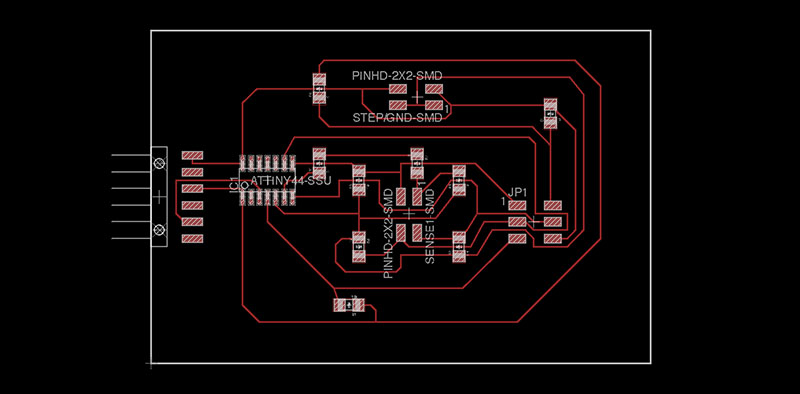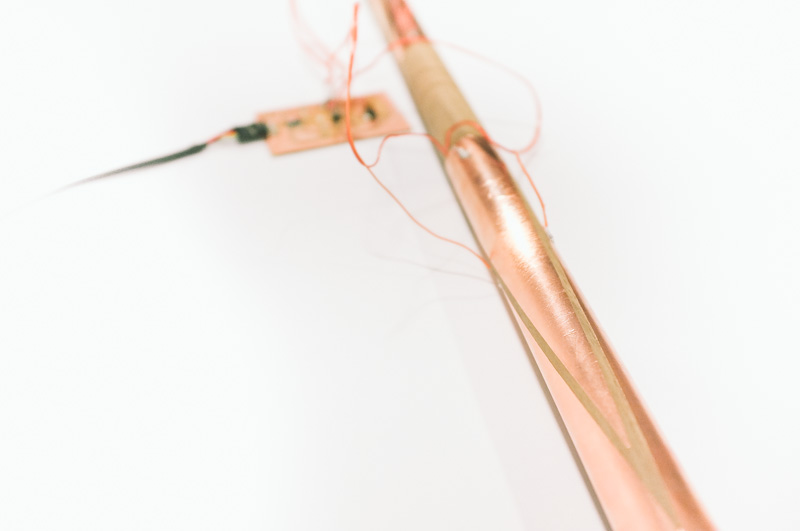
The assignment this week was to measure something by adding a sensor to a microcontroller board that we've designed and then read it. I got most of the way there but had issues in the programming and didn't have enough time to fix them.
Neil spent a solid 10 minutes expounding on how cheap and amazing the step-response-based sensor would be to build that I really felt like I had to try for myself. The cheapness and simplicity of cap-sense using this method was too alluring.

To get started, I looked through a couple of people's tutorials, and found Matthew Blackshaw's the most inspiring. I built upon his design and created something way simpler in scope but hit closer to home with my final project of the bicycle steering wheel. In this iteration, I wanted to see if this would be a simple, useful way to detect where along the handlebars someone has placed their hands.

I had a lot of issues routing all the components though about 10 minutes in, I had something that connected with no fly-away traces. Yet, I thought it was too dense and unraveled it and never could get back to it. I ended up having to add a handful of zero-ohm resistors to my schematic in order to jump over traces in the right places.

Luckily, milling went off without a hitch and because I'd designed the board pretty huge to the exact size of the 2x3" copper board, I didn't even have to bother with milling or drill paths. Stuffing on the other hand was a whole different story. I'm not sure if it was the caffeine or what, but my hands were shaky as hell and I was getting components and solder everywhere. I even accidentally ripped up two traces, one of which I had to just throw away and replace with a wire.

After stuffing, I then cutout the cap pads from the flexible sticky copper tape into mountains and valleys that I then placed onto a giant wooden rod to simulate the handlebars. I then soldered wires directly between the board and the pads. For future reference, the solder sticks to this tape amazingly and I really need to try more vinyl-cut boards.

With everything hooked up and ready to go, I hit endless walls trying to program the circuit and having over a dozen independent failure points that I'm fairly sure I need to debug, I ran out of time trying to fix it.

However, I did write a little bit of the visual side of the processing code to start to visualize the serial input from the chip with some smoothing. All that's left is to iron out some shorts and I'll be able to hook this up completely.






